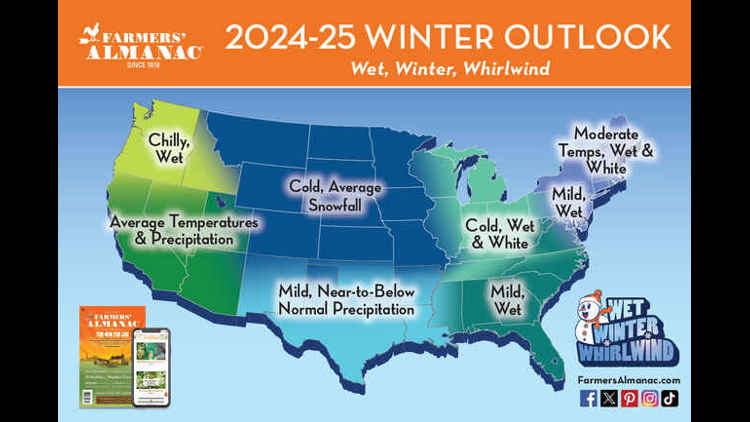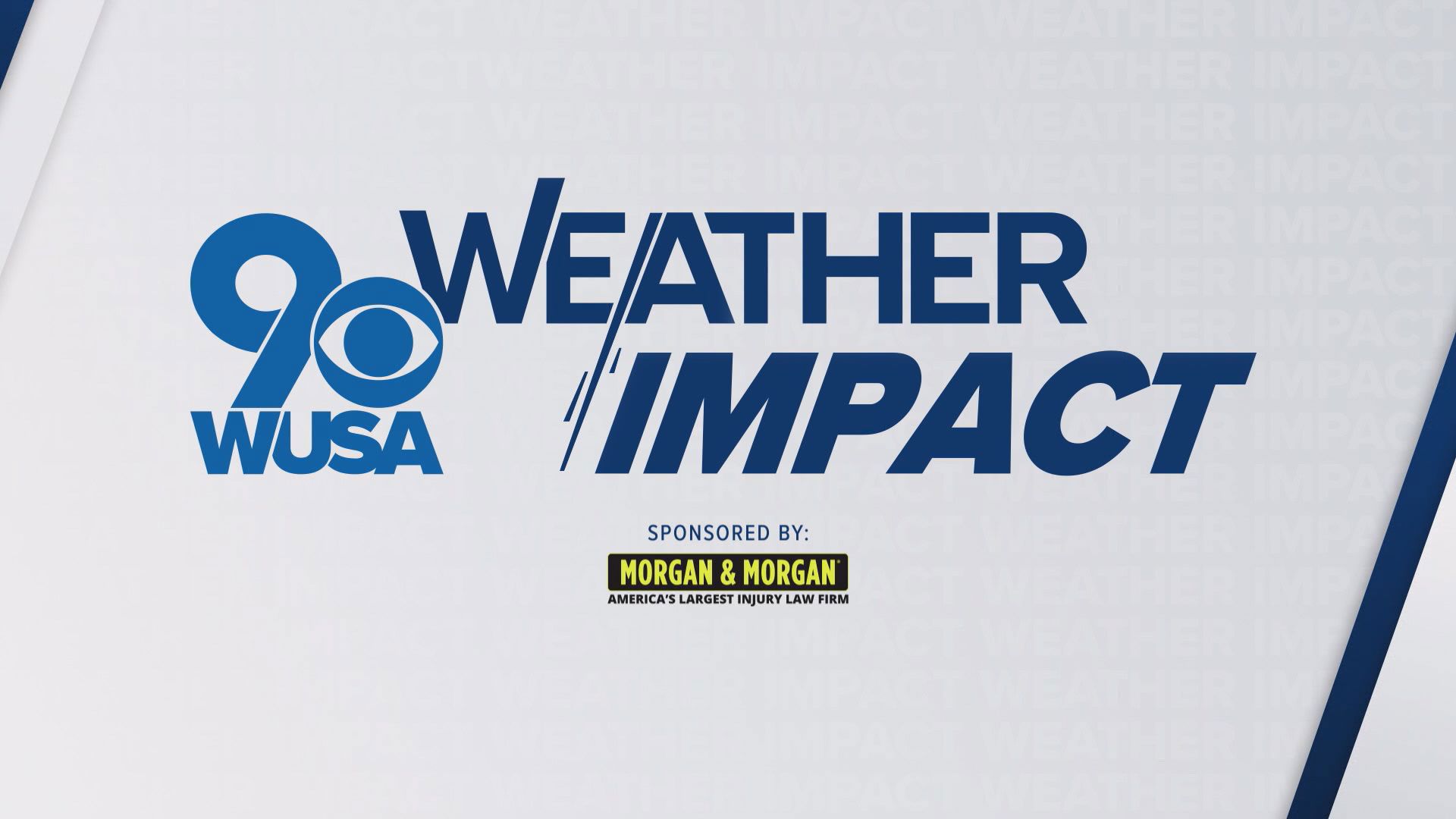WASHINGTON — The Farmers' Almanac has been making weather predictions for more than 200 years. This winter, they're calling for wet and windy weather for the winter of 2024-2025.
"Taking into account the effects La Niña has on the weather, along with our long-standing formula, we anticipate the winter of 2024-25 will be wet and cold for most locations," the almanac's website predicts.
During La Niña, trade winds are stronger than usual, pushing warm water toward Asia. This means that off the west coast of the United States, upwelling increases and brings cold water to the surface. The cold water temperatures in the Pacific push the jet stream north. As a result of the jet stream placement, temperatures tend to be warmer than normal in the South and colder than normal in the north, especially Northwest.
La Niña conditions can also result in drier than average conditions in the southern part of the country and wetter than average conditions in the Pacific northwest and mid-west along the jet stream.

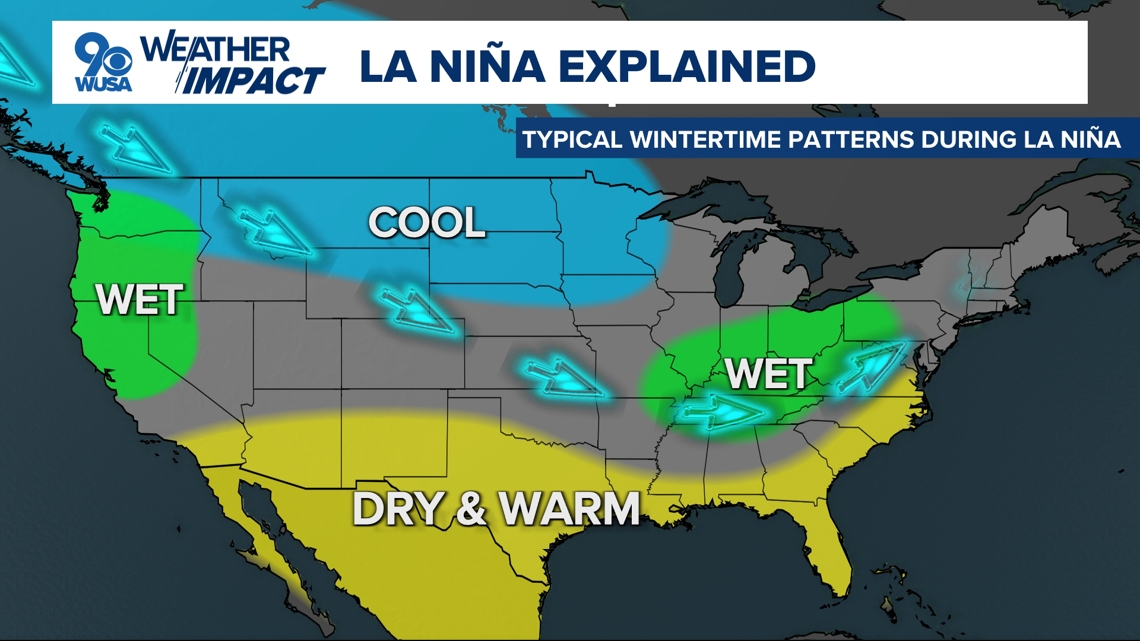
The Farmers' Alamac forecast closely follows the trends we can expect in a given La Niña winter with the heaviest snow in the Northeast and New England with below average precipitation from Louisiana over into California.
Here in the DMV, their forecast calls for a mild and wet winter in DC and Maryland, while Virginia could be colder than average with more snow. But our weather team is discouraging you from putting all your eggs in the Farmers' Almanac basket. And here's why...
This is the 2024-2025 Farmers' Almanac Winter Outlook:

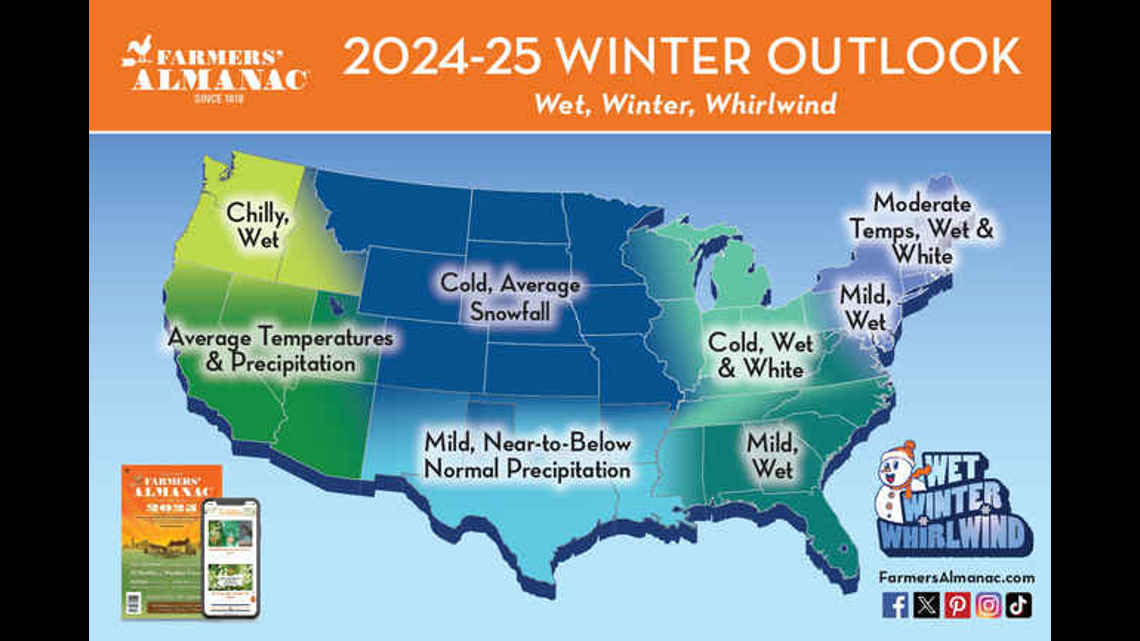
Does it look familiar? If so, it's probably because it's almost identical to their 2023-2024 Winter Outlook:

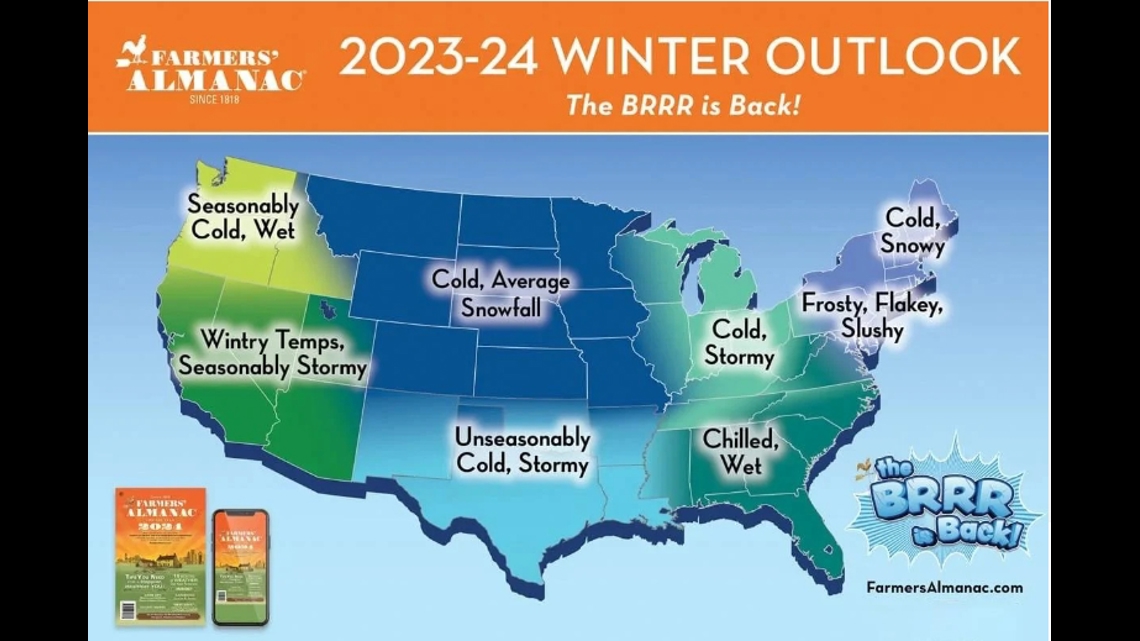
Is the Farmers' Almanac accurate?
The Farmers' Almanac, like its similarly named competitor the Old Farmer's Almanac, relies on a closely guarded proprietary formula to make its predictions. According to the almanac's editors, their forecaster is only referred to by the pseudonym "Caleb Weatherbee" to prevent them from being disturbed.
Sandi Duncan, an editor of the Farmers' Almanac, told science magazine Scientific American that the current "Weatherbee" has been with them for about 30 years, and that his formula is based primarily on the solar activity cycle and the motion of the moon, as well as tidal action and certain winds in the stratosphere over the equator.
That tends to fly in the face of modern meteorology, which relies on public data about weather patterns measured by satellites, heat maps and complex algorithms, and is often peer-reviewed in real time by others in the field.
The Farmers' Almanac also has predictions that extend well beyond any modern forecast. Because of the unpredictability of global climate patterns, it's nearly impossible to determine with any certainty what kind of weather will happen in any given area more than about two weeks ahead.
According to a University of Illinois study in 2010, the Almanac is only 52% accurate, which is basically the same odds as flipping a coin.
What is the WUSA9 Weather Impact team forecasting?
Stay tuned! We'll put out our predictions in a couple of months once we have reliable data to incorporate into our forecast. Our early thoughts are that it will end up warm again without much snow...sorry snow lovers!
Check out of winter weather outlook from last year:

